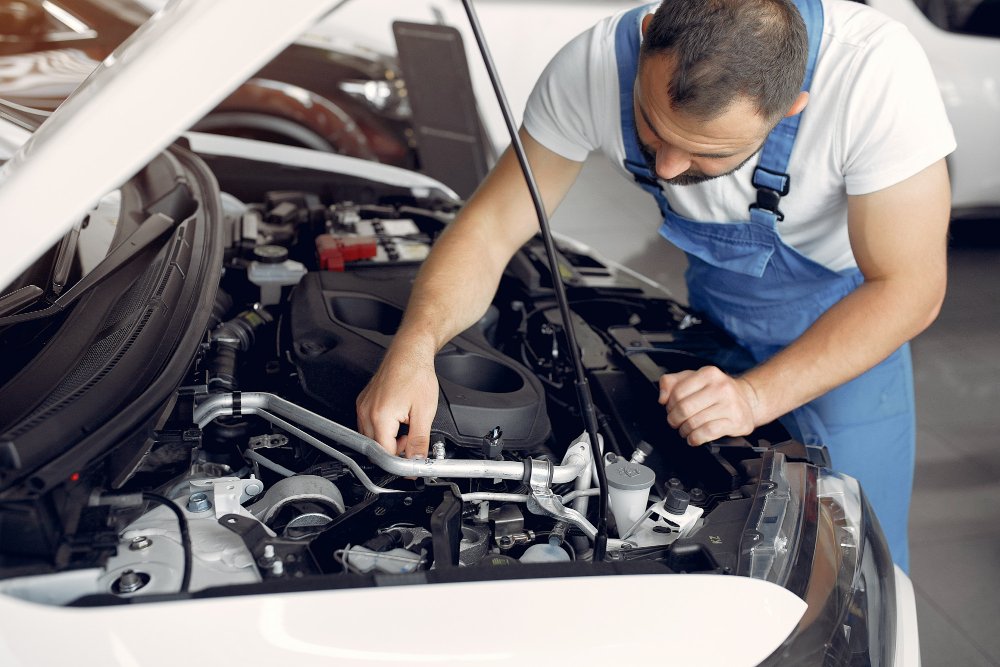Owning a car comes with more responsibility than just filling up the tank and driving around. Whether you’re a daily commuter, weekend road tripper, or occasional errand runner, regular car maintenance is crucial not only for safety but also to avoid expensive repairs down the line. Yet, many drivers overlook basic upkeep simply because they don’t know where to begin. That’s why understanding essential car maintenance can save you time, money, and potentially your life.
Most cars today are built to last longer than ever, thanks to better engineering and technology. However, no machine can run forever without care. Much like our bodies need rest, nutrition, and checkups, your car also requires regular attention. Learning to listen to your vehicle and give it what it needs can keep it running smoothly for years.
The Role of Oil Changes in Vehicle Health
Oil changes are perhaps the most well-known aspect of car maintenance, and for good reason. Your engine runs with dozens of moving parts, and oil keeps everything lubricated. When oil breaks down over time or becomes contaminated, those parts start to grind and wear out prematurely. That’s why most manufacturers recommend an oil change every 5,000 to 7,500 miles. Ignoring this simple step could lead to engine damage that costs thousands to fix.
Why Tire Maintenance Can’t Be Overlooked
Another critical element is tire care. Your tires are the only part of the car that touches the road, so their condition directly affects your control, traction, and braking. Uneven wear patterns can indicate alignment problems, under-inflation, or suspension issues. Regularly checking your tire pressure, rotating your tires every 5,000 to 8,000 miles, and replacing them when the tread gets too low are small steps that pay off in big safety dividends.
Brake Care Is a Safety Essential
Your car’s brakes are another system that should never be ignored. If you hear squeaking, grinding, or feel vibrations when stopping, it’s a clear sign to get your brakes inspected. Brake pads wear out naturally and need replacing every 25,000 to 70,000 miles, depending on your driving habits. Catching brake issues early can prevent more serious problems like rotor damage.
Don’t Neglect Essential Fluids
One aspect of maintenance that often flies under the radar is fluid levels. Beyond engine oil, your car relies on several other fluids: coolant, brake fluid, transmission fluid, and power steering fluid, to name a few. These should be checked monthly if possible, or at least at regular service intervals. Low or dirty fluids can lead to overheating, poor shifting, or steering difficulties—all of which can become dangerous if left unchecked.
Keep Your Battery Running Strong
Don’t forget the battery. A weak battery might not give you any warning before it leaves you stranded. Most car batteries last about three to five years. If you notice slow engine cranking, dim headlights, or need frequent jump starts, it’s time to test the battery or get it replaced. Clean terminals and secure connections also help prolong battery life.
Don’t Ignore Wipers and Lights
Even simple things like windshield wipers and lights are worth your attention. Wipers should clear your windshield without streaking, skipping, or squeaking. If they don’t, replacing them is an easy and inexpensive fix. Headlights and brake lights are critical for visibility and safety, and burned-out bulbs can result in tickets or accidents. A monthly walk-around inspection helps catch these before they become a problem.
Air Filters Matter More Than You Think
Air filters are another forgotten hero of car maintenance. Your engine needs clean air to operate efficiently, and a clogged air filter reduces performance and gas mileage. Replacing your engine air filter every 12,000 to 15,000 miles can help your vehicle “breathe” better and burn fuel more efficiently. The same goes for the cabin air filter, which improves the air quality inside your car.
Pay Attention to Alignment and Suspension
Alignment and suspension also play an important role in your car’s performance and safety. If your car pulls to one side, or the steering wheel vibrates or feels off-center, it may be time for a realignment. Poor alignment affects handling and tire wear, and can even lead to higher fuel consumption.
Follow Your Owner’s Manual and Set a Schedule
For those unsure about maintenance schedules, your owner’s manual is a treasure trove of information. It includes manufacturer-recommended service intervals for almost every component of your car. Many modern vehicles also include dashboard alerts and diagnostic tools to help you stay on top of things. But even with these aids, nothing replaces a good habit of monthly checks and seasonal inspections.
Car Maintenance Frequency Chart
To better understand how often you should perform various maintenance tasks, here’s a quick reference guide:
| Maintenance Task | Suggested Frequency |
|---|---|
| Oil Change | Every 5,000–7,500 miles |
| Tire Rotation | Every 5,000–8,000 miles |
| Brake Inspection | Every 10,000–15,000 miles |
| Battery Check | Every 3–6 months |
| Air Filter Replacement | Every 12,000–15,000 miles |
| Fluid Level Check | Monthly |
| Wheel Alignment | Annually or as needed |
| Wiper Blade Replacement | Every 6–12 months |
| Coolant Flush | Every 30,000–50,000 miles |
This chart provides a general guideline. Always refer to your vehicle’s manual for the most accurate recommendations tailored to your make and model.
Think of Maintenance as Long-Term Car Insurance
Consistent car maintenance ultimately serves as an investment in reliability, safety, and peace of mind. While it may seem like a hassle at times, the benefits far outweigh the inconvenience. The more proactive you are, the fewer surprises you’ll face on the road. Think of maintenance not as a chore, but as a conversation between you and your vehicle—a way to make sure you’re both getting where you want to go, safely and smoothly.
Frequently Asked Questions
How do I know if my car needs an oil change sooner than the recommended mileage?
If your engine sounds louder than usual, the oil appears dark and dirty, or your dashboard shows a warning light, it may be time to change your oil sooner than expected. Short trips, frequent stop-and-go driving, and extreme temperatures can also shorten oil life.
Is it necessary to rotate my tires if they still look fine?
Yes, even if your tires appear to have good tread, rotating them regularly helps them wear evenly. Uneven tire wear can lead to poor handling, vibrations, and reduced lifespan of the tires.
What happens if I ignore a check engine light?
While some check engine lights are minor, others signal serious problems that can damage your engine or exhaust system. It’s best to get a diagnostic test as soon as possible to identify the issue before it escalates.
Can I use water instead of coolant in an emergency?
Using water temporarily in a coolant emergency may be okay in mild climates, but it’s not a long-term solution. Coolant prevents freezing, overheating, and corrosion, all of which plain water cannot do effectively.
How can I make my battery last longer?
To extend your battery’s life, keep the terminals clean, avoid leaving headlights or electronics on when the car is off, and drive regularly so it stays charged. Extreme temperatures also affect battery performance, so consider parking in shade or garages when possible.
What’s the most cost-effective way to keep my car in good condition?
Following your maintenance schedule, doing monthly checks yourself, and addressing small issues before they become major repairs are the most cost-effective ways to maintain your vehicle.

